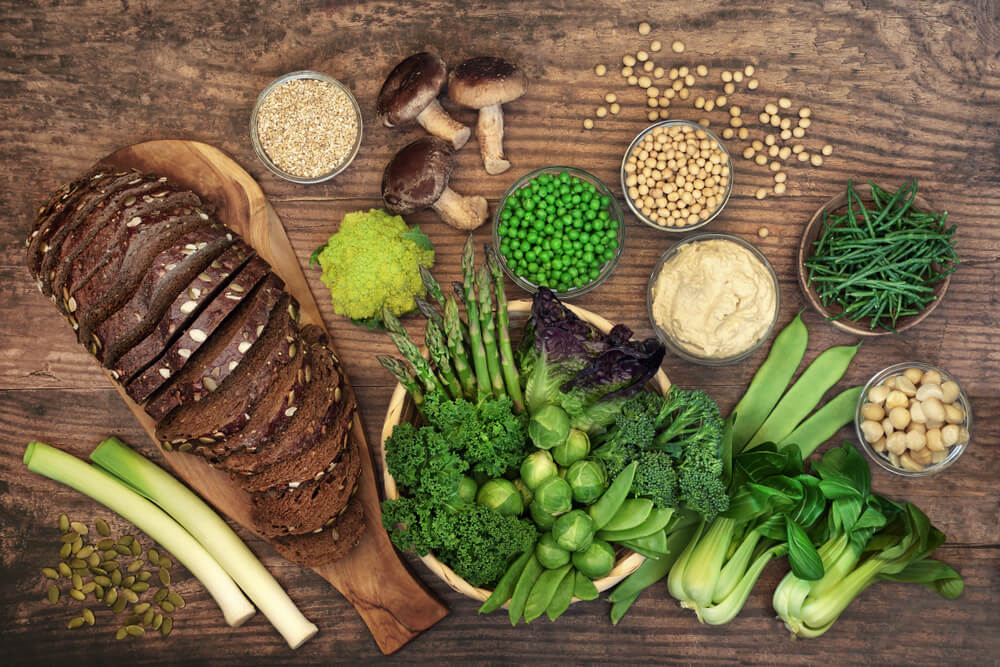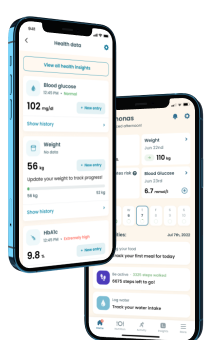The Facts About Glycemic Index and Its Consequence

Over time, health consciousness has continued to grow globally. The FDA has continually emphasized the need for people to choose healthy foods and ensure that they get the right balanced diet. The American Diabetes Association has also been heavily involved in providing orientations to people with diabetes and those who have high blood sugar levels.
With the growing interest in the type of foods that people should eat, the concept of monitoring glycemic index (GI) in foods has become increasingly popular. Much emphasis is now placed on the glycemic index in foods than in other diet metrics, and the reason for this is not far-fetched.
Understanding glycemic index and how it works is extremely easy and one of the most straightforward means to ensure a healthy diet. Its greatest importance is that it helps people know the right meal to eat to prevent an irregular rise in blood sugar levels.
Carb-containing foods have the highest glycemic index, which means they’re more likely to lead to a high blood sugar level. However, not all carbohydrates are bad. For example, the sweet potato glycemic index is relatively low, and consuming it would barely have as much consequence as white bread.
The purpose of this article is to provide you with the facts about the glycemic index, why you should consider it, and how it can help control blood glucose levels in people with diabetes.
What to Expect?
- What’s the Purpose of the Glycemic Index?
- How’s the Glycemic Index Determined?
- Glycemic Index and Diabetes
- Diet Details Based on Glycemic Index
- Limitations of the Glycemic Index as an Accurate Determinant for Diet
What’s the Purpose of the Glycemic Index?

The glycemic index is an essential metric for controlling blood sugar levels. Unlike most dieting plans, the GI isn’t only about weight loss; it ensures that people know how much a particular food affects their diet and if they need to choose a meal plan. The GI is especially more significant in carbohydrate-containing foods.
Other types of foods also have a glycemic index, but they’re essentially in the low to medium range. Some do fall under the high range, but summarily, carbohydrates have the highest foods with a high glycemic index.
A high glycemic index isn’t ideal for the body and generally leads to a high blood glucose level. High GI foods can pose many concerns for a person with diabetes or pre-diabetes and lead to complications.
Why’s that, though? We’ll explain in a bit.
For one, the body quickly absorbs a high glycemic index food. When this happens, the body responds by releasing glucose for the process, which inadvertently leads to high blood sugar. Some of the complications resulting from high blood sugar are diabetes, heart disease, stroke, and other cardiovascular diseases.
On the other hand, low glycemic index foods are considered more healthy foods for people with diabetes. Not all carb foods are high in glycemic index, and knowing them can help you select the correct carb if you choose carbs at all.
There are many reasons why the glycemic index is essential, and they include weight loss, controlling blood sugar, and preventing diabetes. Hence, it follows that a GI diet plan promotes healthy living.
How’s the Glycemic Index Determined?
Understanding the glycemic index is extremely important to reap its benefits.
Glycemic index is calculated as values that start from 1 to 100. These values are known as the GI values. Different meals have their respective values, and the higher the value of a meal, the more likely it is to increase blood sugar.
There are three categories of glycemic index, and they are:
- Low GI: 1 to 55
- Medium GI: 56 to 69
- High GI: 70 and above
Certain foods have a very low blood glycemic index and, as such, don’t raise blood glucose levels. On the contrary, others have a high index and, as such, trigger a high blood glucose response. Carbs are the primary culprits of high glycemic index and are associated with increased blood sugar levels.
Carbs can be divided into three forms — sugar, starch, and fiber.
Eating or drinking carb diets increases the body’s sugar levels. The sugar is then broken into glucose and converted to energy that the body cells need for daily operation.
When you take excessive sugar, which is usually the case with carbs, the glucose In your bloodstream naturally increases. The pancreas then tries to release the insulin hormone to regulate the glucose and move it to the cells that need it for energy.
If your body ends up absorbing sugar faster than the insulin can handle, then there’s generally a spike in sugar levels. In general, foods with a high absorption rate have a high glycemic index.
Sugary and starchy carbs form the majority of high glycemic foods. On the flip side, the body can’t absorb fiber; instead, it forms a gel-like thickness and regulates the absorption of starchy carbs, preventing them from causing a spike in blood sugar levels.
Glycemic Index and Diabetes

Glycemic index and clinical diabetes are highly related. A person with diabetes must do all they can to avoid consuming food with a high glycemic index. Such foods put them at risk of different complications, including cardiovascular disease and unhealthy weight gain.
Diabetes is a serious condition on its own, and worsening it with high GI foods is extremely counterproductive considering that it’s the 7th leading cause of death in the US. According to the American Diabetes Association, hyperglycemia (high blood sugar level) can lead to severe complications such as diabetic ketoacidosis and severe hyperglycemia. Both complications can lead to various complications and death.



From the above, it’s clear that a diabetic must ensure that glycemic index consumption in meals must be on average to avoid a series of complications. When opting for meals, people with diabetes must ensure that they go for a properly balanced diet rich in veggies and other nutrients, consuming only very few carbs. They should try as much as possible to opt for fiber carbs instead of starchy and sugar carbs when to meet their energy demands.
Also, it’s crucial that people with diabetes check their insulin index after every meal, especially if the meal contains lots of carbs. Having an insulin pump can be very handy as well.
Diet Details Based on Glycemic Index
Glycemic diet details are food plans based on the amount of glycemic index present in a single meal or daily meal. Having a glycemic detail or glycemic index meal plan helps you ensure you don’t eat meals that could lead to a spike in blood glucose levels or cause fast unhealthy weight gain.
A glycemic diet plan may not exactly remove everything carb from your diet. Instead, it simply ensures that you eat slow carbs that aren’t as easily digested as fast-absorbing carbohydrate foods that increase blood glucose levels.
A glycemic diet detail is exceptionally beneficial if you already have a meal planner, whether digital or manual. If the meal planner has some fast-absorbing carbs in its diet schedule, you can replace them with carbohydrates with a low glycemic index.
Generally, eating foods suggested by a meal planning app and glycemic diet will help ensure that you have a healthy diet.
A glycemic index chart is a rough example of a glycemic diet plan. A chart will generally contain the following:
- Low glycemic index foods (low GI diet)
- Medium glycemic index foods (medium GI diet)
- High glycemic index foods (high GI diet)
The following table considers some popular staple foods and their respective GI levels to help you incorporate a healthy diet that keeps your blood glucose level at a safe range.
Snacks
GI
Starch
GI
Vegetables
GI
Fruits
GI
Diary
GI
Pizza
80
Plain bagel
33
Broccoli
15
Cherries
22
Plain yogurt
27
Chocolate cake or bar
38
White rice
72
Pepper
40
Apple
40
Low-fat yogurt
33
Poundcake
69
White spaghetti
42
Lettuce
15
Orange
43
Whole milk
31
Popcorn
54
Sweet potato
54
Mushrooms
0
Grapes
53
Soy milk
30
Energy Bar
70
White bread
100
Onions
10
Kiwi
50
Skim milk
37
Soda
91
Brown rice
50
Green peas
51
Banana
58
Chocolate milk
34
Doughnut
76
Pancakes
67
Carrots
16
Pineapple
66
Yogurt
14
Jelly Beans
78
Wheat bread
58
Beets
61
Watermelon
80
Custard
29
Pretzels
83
Baked potato
94
Kidney beans
24
Dates
42
Ice cream
11
Oat breakfast cereals
69
Sweet corn
52
Rye bread
67
Despite being considered a starchy food, the sweet potato glycemic index is generally low at 54. However, when baked, it almost doubles to 94. Baking, as a cooking method, holds a more considerable risk for people with diabetes.
Mashed potatoes are also high in glycemic index and pose a high blood glucose risk. The average glycemic index for instant mashed potatoes is 87
Coconut sugar is a healthier form of sugar and can serve as an alternative to white or table sugar. The glycemic index of coconut sugar is within 50 to 54.
The popcorn glycemic index is within the range of healthy GI, suitable for people who love sugary snacks. This snack is definitely a better option than most snacks.
While it’s best that most people with diabetes avoid sugary snacks, opting for a popcorn snack that has moderate sweetness won’t do lots of harm.
Dietary fiber is considered a good food category for people with diabetes as well. Fibers, in general, aren’t easily digestible, and as such, they don’t contribute to sudden spikes or dips in blood sugar levels.
In summary, if you’re struggling with diabetes or high blood glucose level, opting for food with low and moderate GI is the best choice.
Limitations of the Glycemic Index as an Accurate Determinant for Diet
While the glycemic index of each food helps determine blood sugar levels, the concept isn’t exactly black and white. A high glycemic index doesn’t mean that a food will generally lead to a surge in blood sugar levels. Certain foods such as watermelon have a pretty high glycemic index value but don’t cause a surge in blood levels.
This is because the digestible carbs in watermelon are incredibly minimal. Carbs are the major determinants of the glycemic index; how quickly your body absorbs them determines the extent to which pure glucose potentially causes a spike in blood sugar levels.
Fortunately, there’s a way to circumvent this limitation by focusing on the glycemic load (GL) of every food with a high glycemic index value. However, you don’t necessarily have to look out for the glycemic load value of foods with a low GI value, as the former is rarely higher than the latter.
The Glycemic Load
The glycemic load is a numerical value that shows the change in blood glucose after a meal serving. For example, a ¾ watermelon only has a GL of 5, which is very healthy and won’t trigger any rise in blood sugar levels.
The same goes for most fruits with high glycemic indexes. They barely have digestible carbs, and relying on their GI value alone may be misleading.
GL values are usually categorized as:
- Low GL: 1 to 10
- Medium GL: 11 to 19
- High GL: 20 or more
Conclusion
The glycemic index plays a vital role in balancing blood sugar. While it’s apparent that it may not give the complete picture of blood sugar rise and fat gain, it’s essential and can go a long way in helping you know the right food to go for. With proper glycemic load calculation, you can get the best benefits that GI offers and plan your diet to be healthier and more satisfying.
Knowing how to calculate the food glycemic index is even more critical if you have diabetes. Being diabetic means you need a well-drawn out plan that helps you structure your food timetable so that it doesn’t contribute to a rise in your blood sugar levels.
Knowing how glycemic Index works, you can successfully use an excellent meal planner app to ensure you only take the right food. Our Klinio app is one of the reliable meal plan apps that you can trust to help you eat the best foods that don’t increase your blood sugar level as a diabetic. We also have a dedicated resource hub that outlines different foods, their respective GI values, and how their intake influences diabetes.
Take a quiz and get your diabetes-management plan today!









